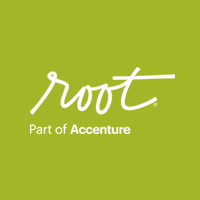Have you ever misdiagnosed a medical issue for yourself? Perhaps you thought a cold would just run its course, but after several weeks you give in and go to the doctor for antibiotics. Or maybe you ran to the doctor, sure that you needed a particular treatment – only to learn that you had something completely different. Good doctors examine all of our symptoms and connect things that we don’t always realize are connected. They understand the human body as a system and are taught to diagnose the system before applying treatment.
Unfortunately, in the field of Learning & Development, we can feel rushed to apply treatment, and we’re often pressured by those around us – leaders as well as employees – to give them the medicine (training) that will fix the problem. But helping people grow, change, and be more effective is usually more complex than that. Of course, sometimes we need to “get the message out” quickly and give people some quick guidance and procedures to follow to keep bigger problems from occurring. However, when we’re trying to grow capability, applying a treatment without understanding the full picture can be completely ineffective. It’s like taking Sudafed for a punctured lung.
The good news is that when you combine the disciplines of Change Management and Learning & Development, you can get a leading-edge treatment for the actual problem. At Root, we often see these opportunities at both the corporate level and the individual role level. When companies want to go from point A to point B, we start by ensuring that there is a solid understanding of the current state. We help them diagnose where they are today and align them on the truth of the current state – the positives as well as the challenges, obstacles, and barriers. When key stakeholders are aligned on the current state, they can most effectively take steps toward the future state and execute their strategy to get there.
The right execution of strategy is also more complex than applying one “treatment.” For a company to get where they want to go, a plan takes shape with multiple initiatives that include a full plan of attack for launching and sustaining key efforts. To return to the medical metaphor, if you want to lose 50 pounds to avoid disease, the best strategy likely involves approaching the change from several angles in ways that you can sustain over time.
Individual change is the same, but when organizations are looking to grow people, they sometimes just “put in an order” for a program. This can result in a bad rap for Learning & Development when the desired change doesn’t occur. L&D can get labeled as non-strategic and could be one of the first areas to be cut when organizations don’t deliver on key outcomes.
In our experience, that’s a bad move. Best-in-class L&D professionals are highly strategic – they understand business outcomes and the human condition with a capability in change consulting. When organizations need their salespeople to increase business or they want their frontline people to improve quality, the best-in-class learning doctor goes into diagnose mode. We partner with leaders in learning and development to do just that.
We start with an assessment of the current state of the role. What’s working? What isn’t? What are the truths that frame reality for that role today? The key to gaining clarity on the current state requires hearing from people in these roles, and not just the leaders who manage them. Alignment on a new vision for the role and the shifts required to get there begins to shape the plans that will be most effective.
Attending a development or training program can be an important aspect of change, but one event likely won’t ensure that a group of people evolve a role from point A to point B. A coordinated plan includes multiple interventions and sustaining efforts that are embedded into critical systems in the organization.
Are there roles in your organization that need to evolve to higher levels of capability to enable business performance?
If so, bring the expertise and examination techniques of the “doctor” to bear, and the solutions that emerge can get the role on its way to better health.






